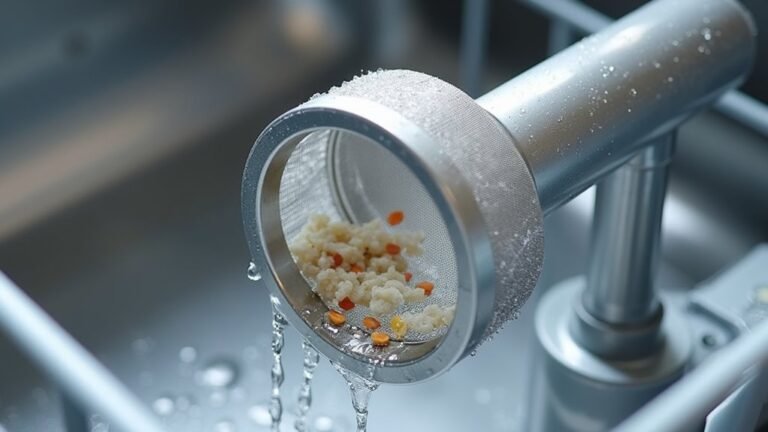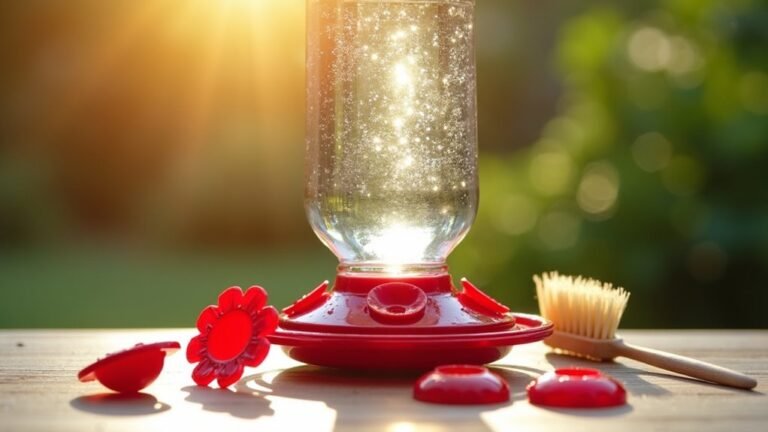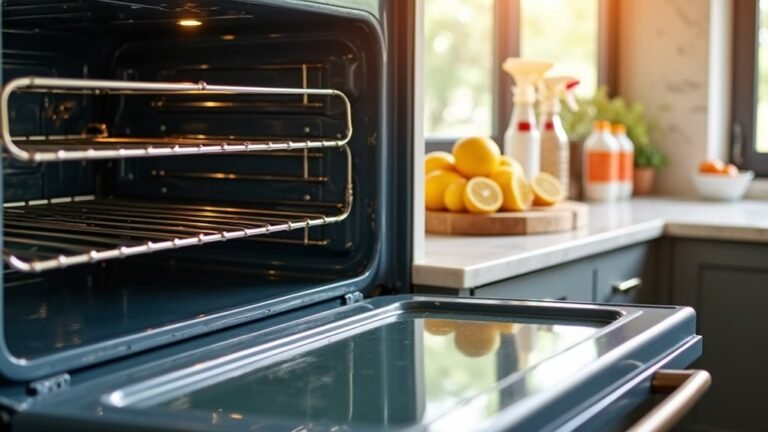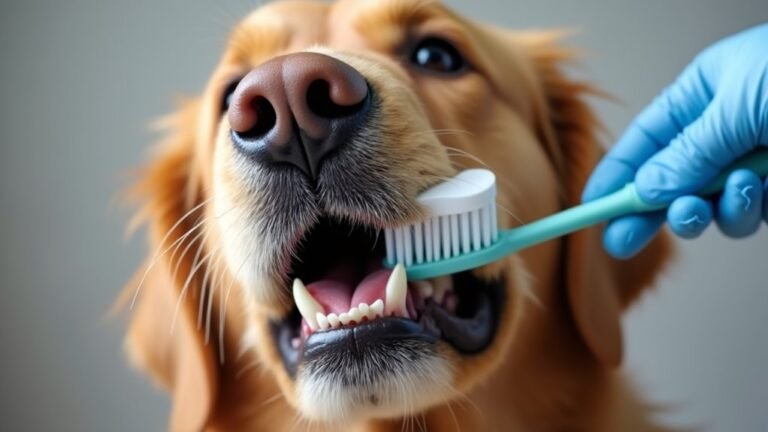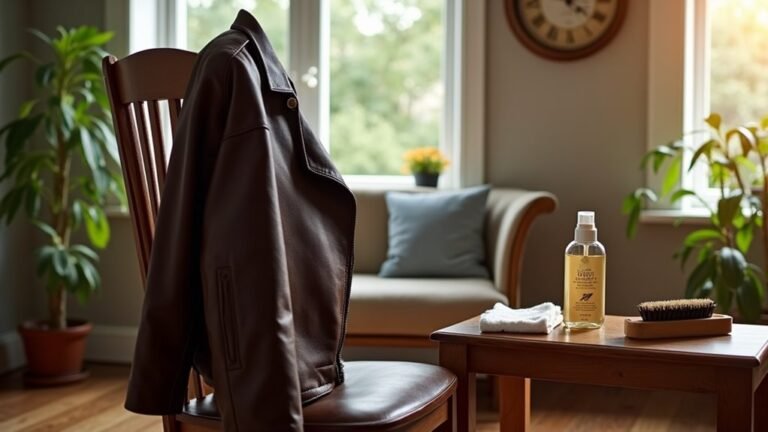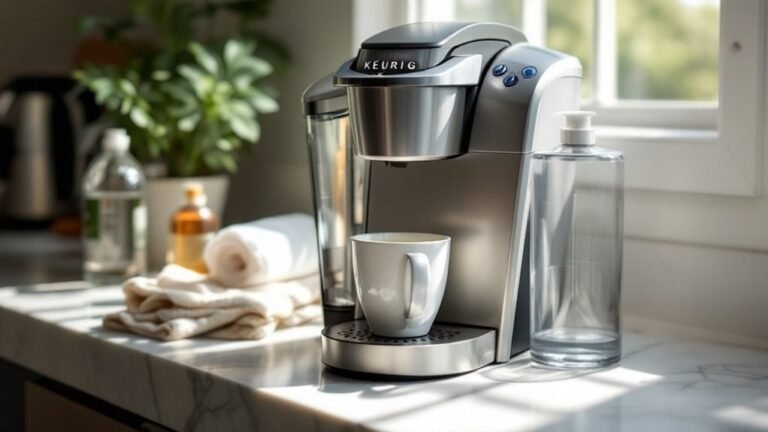Keeping your bird bath clean is important for both the birds and the look of your garden. When you see green water, floating leaves, and slimy algae in your bird bath, it’s more than just ugly – it can make birds sick.
According to the National Audubon Society, “A dirty bird bath can spread diseases among birds that drink or bathe in it, which is why regular cleaning is so important.”
The key is cleaning the bath regularly without using harsh chemicals that could harm the birds. Think of it like cleaning a water bowl for your pet – you want it safe and fresh every day. Birds need clean water not just for drinking, but also for keeping their feathers in good shape for flying.
When bird baths get dirty, they can become breeding grounds for mosquitoes and harmful bacteria. Just like we wouldn’t want to drink from a dirty glass, birds need clean water to stay healthy. The good news is that keeping a bird bath clean doesn’t have to be difficult or time-consuming.
A dirty bird bath can drive away the very creatures we’re trying to attract to our gardens. By keeping it clean, we create a safe and welcoming spot for birds to drink, bathe, and visit our yards regularly.
Sparkling Water, Happy Birds
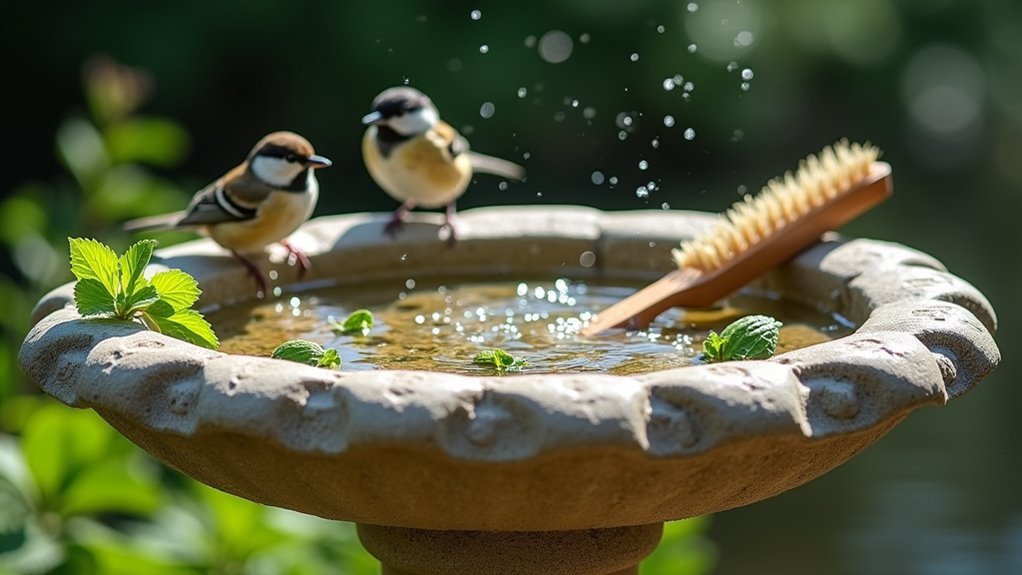
Why do birds always seem more active and happy around clean water?
It’s because sparkling, fresh water isn’t just pretty—it’s essential for their health.
Clean water isn’t merely aesthetic—it’s vital for birds’ wellbeing and natural behaviors.
We’ve found that regular replacement every 2-4 days, along with vinegar or hydrogen peroxide cleanings, makes a huge difference. Regular sanitization is crucial for bird health, and I think positioning in shade helps too, and we should always monitor for debris.
Perhaps that pre-1982 penny trick is worth trying!
##
Let’s talk about the do’s and don’ts of bird bath maintenance that’ll keep our feathered friends healthy and happy.
We’ve found that regular cleaning with natural solutions like vinegar and water works wonders, while harsh chemicals can harm birds and should be avoided at all costs. Regular cleaning prevents mold and bacteria growth, ensuring a safe environment for our avian visitors. Perhaps the most important thing to remember is that consistency matters – replacing water frequently and giving the bath a thorough scrubbing every few days will prevent disease spread and keep birds returning to your yard.
Things to Do When Cleaning a Bird Bath
Keeping your bird bath clean is essential for the health of visiting birds and to maintain an attractive garden feature.
Regular cleaning prevents the spread of disease among birds and stops algae from developing in the stagnant water.
A thorough cleaning routine guarantees birds have access to fresh, clean water while extending the lifespan of your bird bath.
- Empty completely – Remove all water and debris like leaves, twigs, and feathers to prevent contamination.
- Prepare cleaning solution – Mix nine parts water with one part distilled vinegar for an effective, bird-safe cleaner.
- Scrub thoroughly – Use a stiff brush to clean the basin’s interior, focusing on removing algae and built-up residues.
- Apply baking soda – Sprinkle baking soda on the surface and scrub for additional cleaning power, then rinse thoroughly.
- Rinse thoroughly – Ensure all cleaning agents are completely removed by rinsing multiple times with clean water.
- Dry completely – Allow the bird bath to dry in sunlight before refilling to inhibit bacterial growth.
- Refill with fresh water – Use clean, fresh water to provide birds with a safe drinking and bathing area.
Things to Avoid When Cleaning a Bird Bath
When maintaining your bird bath, proper cleaning techniques are essential not just for aesthetics but for the health and safety of your feathered visitors.
The wrong cleaning methods or products can transform your backyard sanctuary into an unwitting hazard that could harm birds or drive them away entirely.
Birds have delicate respiratory systems and specialized feathers that require gentle care, making it vital to approach bird bath maintenance with appropriate caution and knowledge.
- Harsh chemicals (bleach, ammonia) – These toxic substances can damage birds’ feathers and introduce harmful toxins that may cause illness or death when birds drink the water or bathe.
- Abrasive tools and cleaners – Wire brushes and rough scrubbing pads can scratch the surface of your bird bath, creating tiny crevices where bacteria like salmonella can flourish and spread to birds.
- Strong cleaning solutions – Anything stronger than diluted vinegar solution (9:1 water to vinegar ratio) can leach into soil and harm surrounding plants and wildlife.
- Synthetic soaps and detergents – These products strip essential protective oils from birds’ feathers, potentially leaving them vulnerable to cold weather and predators.
- Incomplete rinsing – Failing to thoroughly rinse after cleaning leaves residual cleaning agents that can contaminate water, potentially causing health problems like avian pox through ingestion or contact.
Steps
Regular cleaning of your bird bath is essential for maintaining a healthy environment for our feathered friends.
Dirty bird baths can harbor harmful bacteria, algae, and parasites that may cause illness in birds that visit your garden.
A clean bird bath not only promotes bird health but also enhances the aesthetic appeal of your outdoor space.
The simple vinegar-water solution recommended for cleaning is non-toxic to birds yet effective at removing buildup, making it an environmentally friendly choice for bird bath maintenance.
Step 1: Empty the bird bath completely, pouring out all old water.
Step 2: Remove any visible debris such as leaves, twigs, feathers, and dirt from the basin.
Step 3: Create a cleaning solution by mixing nine parts water with one part white vinegar in a bucket.
Step 4: Scrub the entire interior surface of the bird bath using a heavy-duty brush and the vinegar solution.
Step 5: Pay special attention to areas with algae growth or visible staining, applying extra scrubbing pressure as needed.
Step 6: Rinse the bird bath thoroughly with clean water to remove all traces of the cleaning solution.
Step 7: Allow the bird bath to air dry completely in direct sunlight, which helps kill remaining bacteria.
Step 8: Refill the clean, dry bird bath with fresh water for your avian visitors to enjoy.
Final Thoughts
Maintaining your bird bath doesn’t have to be complicated, but it certainly requires commitment.
We think regular cleaning with natural solutions like vinegar keeps our feathered friends safe while preventing disease spread.
##
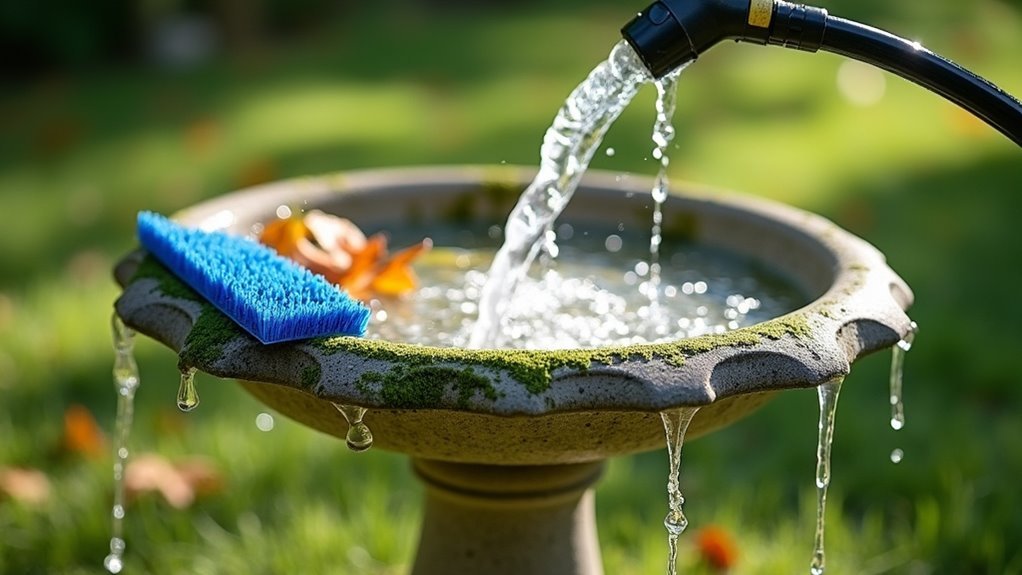
Maintaining a clean bird bath is one of the simplest yet most impactful ways to support your local bird population.
By following these straightforward cleaning practices—replacing water every 2-4 days, using a gentle vinegar solution for cleaning, scrubbing thoroughly, positioning your bath thoughtfully, and implementing preventive measures like copper pennies—you create a safe haven for birds to drink and bathe. Regularly maintaining the pump ensures that your bird bath operates efficiently and remains an attractive water source for birds.
Remember that your bird bath isn’t just an ornamental feature in your yard; it’s a critical resource for wildlife, especially during hot or dry periods.
The few minutes you spend on regular maintenance translate directly into healthier bird populations and a more vibrant backyard ecosystem.
Take pride in your role as a responsible wildlife steward.
Start implementing these cleaning practices today, and watch as your bird bath becomes a bustling hub of avian activity.
Your feathered visitors—and the environment—will thank you for it.

